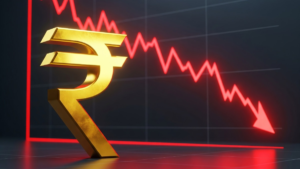Tariff shock turns FIIs to sellers in April. Analysts flag world danger however again India’s fundamentals

The affect was swiftly mirrored in FPI flows, which noticed web outflows of over Rs 10,000 crore from Indian markets by April 5. Whereas this marks a pointy distinction from the shopping for development seen simply weeks earlier, analysts stay divided on the outlook. Whereas world uncertainty has put FPIs in a wait-and-watch mode, India’s strong macroeconomic fundamentals and supportive coverage atmosphere proceed to supply long-term funding attraction, particularly compared to different Asian friends.
Dr. VK Vijayakumar, Chief Funding Strategist at Geojit Monetary Providers, straight highlighted this shift, saying, “The development of FPIs turning consumers in March modified in early April when FPIs turned sellers once more.” The set off got here on April 2, when President Trump introduced reciprocal tariffs, resulting in a significant development reversal in world inventory markets.
The size of the tariffs exceeded expectations. “The ten% bottom line tariff on all imports, the 25% tariff on all car imports and steep reciprocal tariffs on most international locations” are, as Vijayakumar famous, anticipated to boost inflation within the US. He warned of broader financial dangers, stating, “There are considerations that the US financial system would possibly even slip into stagflation.”
This led to huge promoting within the US markets the place S&P 500 and Nasdaq misplaced above 10% in two days.
The fallout was not restricted to the West. China’s swift response has escalated tensions additional. “The Chinese language retaliation to US tariffs has been fast,” he noticed, including that “a full blown commerce battle will affect world commerce and world financial progress.” For now, he believes international buyers are hesitant: “FPIs are prone to be in a wait and watch mode earlier than turning consumers.” As of April 5, “the overall FPI promoting in India stood at Rs 10,354 crores.”Regardless of this cautious world backdrop, Manoj Purohit, Accomplice & Chief, FS Tax, Tax & Regulatory Providers at BDO India, stays optimistic about India’s skill to draw international capital over the long term. He identified that, “With the start of the brand new monetary yr, optimism is excessive for each India and FPIs on the reviving market.”India, he famous, continues to carry sturdy attraction for world buyers, due to its financial resilience and coverage consistency. “India stays a lovely vacation spot for attracting world capital,” he stated, including that the current US tariffs on Indian items are comparatively modest as in comparison with different Asian international locations, offering India a powerful proposition to supply viable export alternatives.
Purohit highlighted India’s place as one of many fastest-growing economies supported by an enormous client market, expert workforce, and business-friendly reforms.
The RBI’s determination to keep up bond and G-sec limits for FPIs can be seen as a optimistic sign. “The current transfer by RBI… is a sworn statement of the federal government’s intent to maintain gateway open for offshore contributors,” he added.
Whereas near-term volatility persists as a result of world developments, each analysts counsel that India’s financial fundamentals, infrastructure push, and diversifying commerce technique provide a compelling case for long-term funding. Purohit summarized this by saying, “The Indian financial system at present appears effectively insulated to outlive momentary headwinds on account of macro modifications and home triggers of excessive valuation, tight earnings, and rising inflation prices.”
Because the markets now look to the RBI’s upcoming coverage stance and the evolving tariff panorama, investor sentiment stays delicately balanced between warning and long-term confidence.
(Disclaimer: Suggestions, strategies, views and opinions given by the specialists are their very own. These don’t signify the views of The Financial Occasions)








